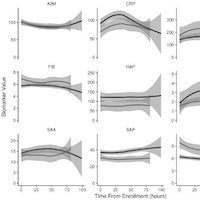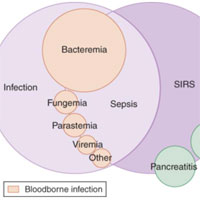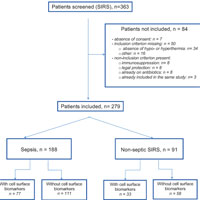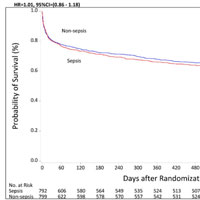Tag: SIRS

Combined Biomarkers Predict Acute Mortality Among Critically Ill Patients With Suspected Sepsis
Combined biomarkers predict risk for 14-day and total mortality among subjects with suspected sepsis. Serum amyloid P and tissue plasminogen activator demonstrated the best discriminatory ability in this cohort. Fourteen-day... read more

Sepsis and Septic Shock – What Matters from EM Cases Course
In this podcast Dr. Sara Gray, intensivist and emergency physician, co-author of The CAEP Sepsis Guidelines, answers questions such as: How does one best recognize occult septic shock? How does SIRS, qSOFA and NEWS compare... read more

Mimics of Sepsis: What do ED Physicians Need to Know?
SIRS and sepsis are common clinical entities. A wide range of estimates for prevalence exists, with 300 to 1000 cases per 100,000 persons per year. Once a septic patient is admitted, more than half will require at least step... read more

Circulating Biomarkers May be Unable to Detect Infection at the Early Phase of Sepsis in ICU Patients
During the study period, 363 patients with SIRS were screened, 84 having exclusion criteria. Ninety‑one patients were classified as having non‑septic SIRS and 188 as having sepsis. Eight biomarkers had an area under... read more

Lies, Damned Lies, and Sepsis Bundles
The Surviving Sepsis Campaign recently released an update to the bundles of care it recommends for "sepsis" patients. You may have heard of the three-hour bundle, which essentially means that you do a bunch of stuff (lactate,... read more

Health-related Outcomes of Critically Ill Patients With and Without Sepsis
Critically ill patients with sepsis have higher healthcare resource use and costs but similar survival and HRQoL compared to matched patients without sepsis. We conducted a primary propensity score matched analysis of patients... read more

Association of the Quick Sequential (Sepsis-Related) Organ Failure Assessment (qSOFA) Score With Excess Hospital Mortality in Adults With Suspected Infection in Low- and Middle-Income Countries
In this retrospective secondary analysis of 9 diverse LMIC cohorts that included 6569 hospitalized adults with suspected infection, a qSOFA score greater than or equal to 2 was significantly associated with increased likelihood... read more

Assessment of Clinical Criteria for Sepsis
The Third International Consensus Definitions Task Force defined sepsis as "life-threatening organ dysfunction due to a dysregulated host response to infection." The performance of clinical criteria for this sepsis definition... read more

Epidemiology of Sepsis in Turkish ICUs
The prevalence and mortality of sepsis are largely unknown in Turkey, a country with high antibiotic resistance. A national, multicenter, point-prevalence study was conducted to determine the prevalence, causative microorganisms,... read more

Diagnosis of Sepsis from a Drop of Blood by Measurement of Spontaneous Neutrophil Motility in a Microfluidic Assay
Current methods for the diagnosis of sepsis have insufficient precision, causing regular misdiagnoses. Microbiological tests can help to diagnose sepsis, but are usually too slow to have an impact on timely clinical decision-making.... read more

Sepsis-3, a New Definition. Solutions or New Problems?
Before we can discuss the "Sepsis-3" definitions, we need to look back at the history of Sepsis definitions, and what the rationale was leading the authors to create a new definition. Below is a brief, albeit non-exhaustive,... read more

The Inflammatory Response to ECMO
Extracorporeal membrane oxygenation (ECMO) is a technology capable of providing short-term mechanical support to the heart, lungs or both. Over the last decade, the number of centres offering ECMO has grown rapidly. At the... read more

On Diagnosing Sepsis
Two years ago, a panel appointed by the Society of Critical Care Medicine and the European Society of Intensive Care Medicine, referred to as a consensus conference, proposed a new definition for sepsis and new diagnostic... read more

Managing Sepsis and Septic Shock Current Guidelines and Definitions
While sepsis defies simple definition, it's generally understood to be a clinical syndrome caused by infection that may have profound adverse physiologic consequences. Although its precise incidence is unknown, sepsis is... read more




